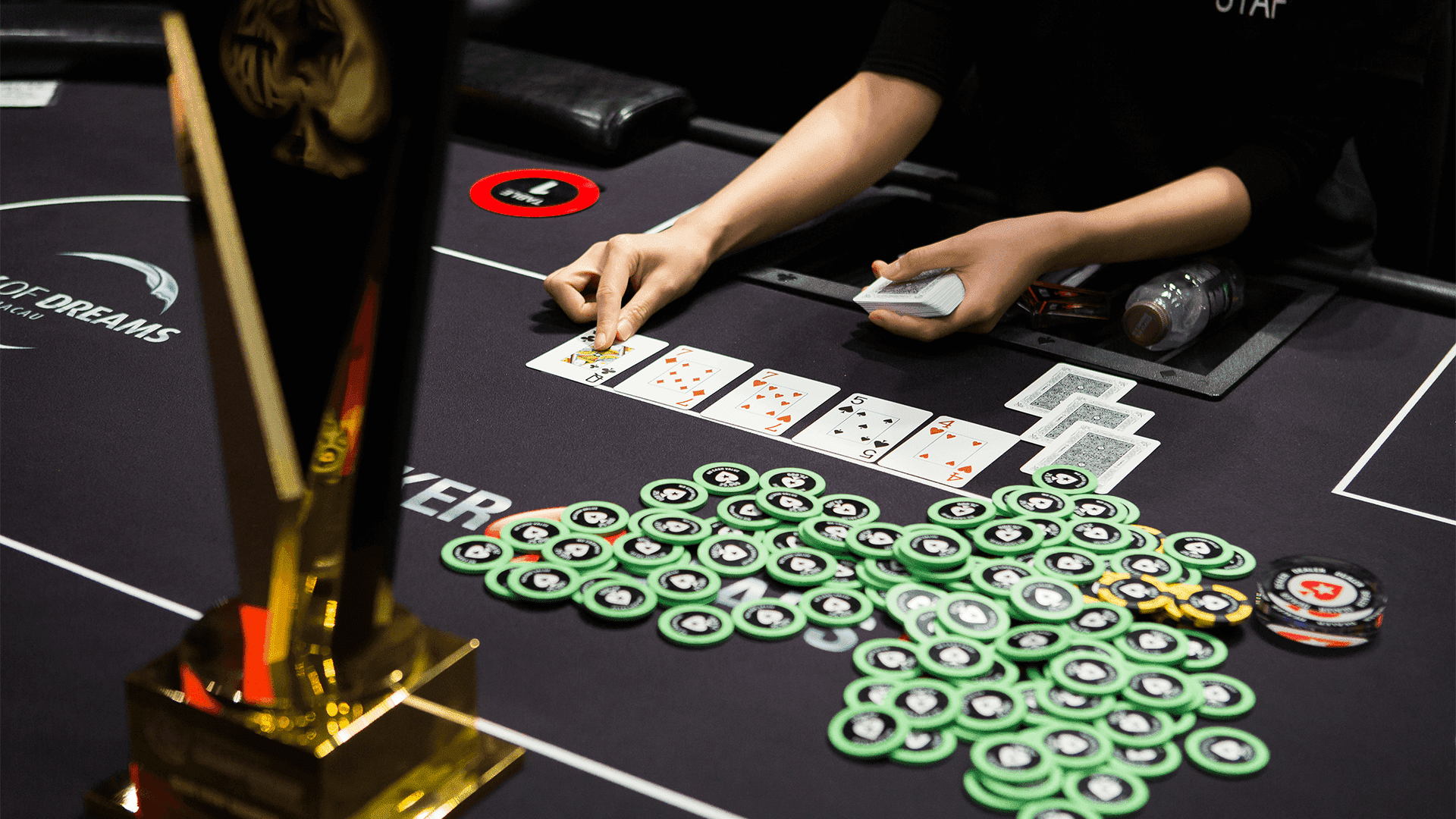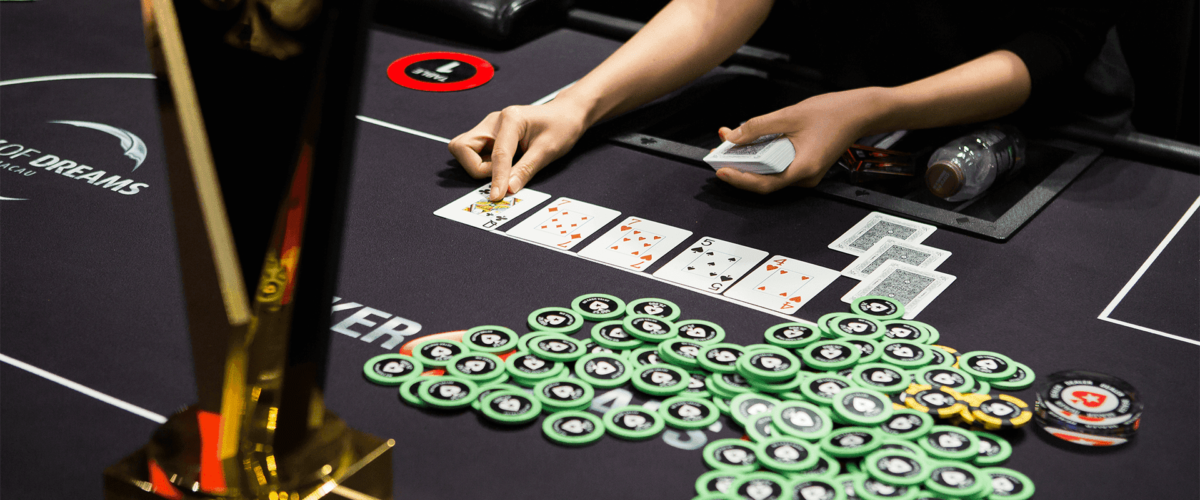Ramon Colillas Poker Analysis
The final table of the 2019 PokerStars Players Championship had a number of interesting hands played by eventual winner Ramon Colillas of Spain. In today’s article, we are going to take a look at three of them, discussing the strategy behind the situations and what Colillas is choosing to do.
The first hand Colillas plays at the final table we see him open (37:28) with 6♥ 4♥ to 575K on the button, with Rivera defending from the big blind calling the additional 325K. The flop comes K♥ J♦ 4♣ giving Ramon bottom pair, and when Rivera checks to him, he elects to make a very small continuation bet of 375K into the 1.525M chip pot, about 1/4 pot. This is a great play and sizing that is fairly standard for high-level players but often missed by newer players. Colillas is essentially bluffing, although he will have flopped the best hand sometimes as well and this bet serves to protect his equity in the pot when that’s the case. The point that’s often missed is the strong range advantage Colillas has in this situation. He has all the nutted hands in his range open-raising from the button:
AA/KK/JJ/AK/KJ/K4s, while Rivera cannot really hold many of these hands.
By virtue of his choice to call preflop rather than 3-bet, Colillas can eliminate hands like AA/KK/JJ/AK from his range. Additionally, the strongest hand in Rivera’s preflop calling range, 44 which flopped a set, is blocked by Ramon’s 4♥ , leaving only one card combination of 44 available instead of three. Since he has all the strongest hands in his range, and Rivera does not, a smaller c-bet sizing with Colillas’s entire range makes good sense. With our strongest hands, we would value bet small to encourage some lighter calls from the stronger parts of Rivera’s range (which we know are mostly medium strength hands at best), so this sizing works well with our bluffs too. A savvy opponent like Rivera should fold to this bet at a relatively high frequency because he recognizes he is out of position, without the initiative, and has a distinct range disadvantage. In short, a great spot for Colillas and a bad spot for Rivera.
At 1:43:50 while playing 6 handed we see Colillas open fold pocket 5’s from UTG+1. Why wouldn’t you open a pair shorthanded here, less experienced players may wonder. This is a clear ICM fold situation for Colillas; in fact, he should generally be opening a very tight range in this spot. He can mix in a few bluff combos to add some balance to the nutted strength he’ll be opening, but the situation is bad for anything else. The stacks at this point are:
- Martini 101bb
- Koonce 31bb
- Colillas 28bb
- Baumstein 23bb
- Rivera 17bb
- Perrault 2bb
With a solid chip position, and Perrault in immediate peril with only 2 big blinds, the chip leader Martini can put enormous pressure on the 3 middling stacks, who don’t desire being at risk to bust out before Perrault busts in 6th. With an imminent pay jump looming, as well as his current chip position, it would be a significant ICM mistake for Colillas to place his entire stack at risk here without a top premium hand, and Martini knows that. It’s also Martini’s big blind. While a pocket pair is a reasonably good hand shorthanded, from a tactical standpoint the situation is so bad for Colillas his best option is simply to fold.

At 2:03:10 we see Martini open to 2x with 44 from the cut-off, and Colillas picks up AQo on the Button. With 32bb’s how should he play it? Colillas elects to simply move all-in. On the surface, this may seem like too big of a shove, but given the circumstances, it’s quite reasonable. Consider that Colillas knows the chip leader Martini is likely opening a very wide range of hands. The players in the blinds have about 20bb each, which means they will need a bonafide monster to continue and risk their tournament life in this spot. With AQo Colillas blocks some of those hands, namely AA/QQ/AK, making it less likely an opponent will wake up with those holdings.
When the blinds fold, the action will be back to Martini. With a distinct chip lead and massive ICM pressure available to him against Colillas, Martini would have many options facing a normal sized 3B of between 5-6 big blinds. He can 4-bet and force Colillas to a preflop decision. He can call and go to the flop with Colillas having about 26bb left, a very awkward stack size in a 3B pot with this level of ICM implications working against him. In short, Martini has a massive tactical advantage due to the chip stack distributions and ICM… a tactical advantage that is negated completely by Colillas reraising all in. Now Martini cannot use his commanding chip lead and the ICM of the situation to apply any pressure, he can only call or fold. And he’s stuck with a wide range of hands the vast majority of which will be way too weak to call off with. The result? Colillas will take it down preflop the vast majority of the time, adding 6bb to his stack and avoiding awkward preflop and post flop decisions with significant ICM pressure weighing on him.
There were many interesting spots and decisions for Colillas on his final table run to victory. I hope you enjoyed looking at these spots above as much as I did.
Condimentum Nibh
Donec sed odio dui. Cras mattis consectetur purus sit amet fermentum. Vestibulum id ligula porta felis euismod semper. Curabitur blandit tempus porttitor.












